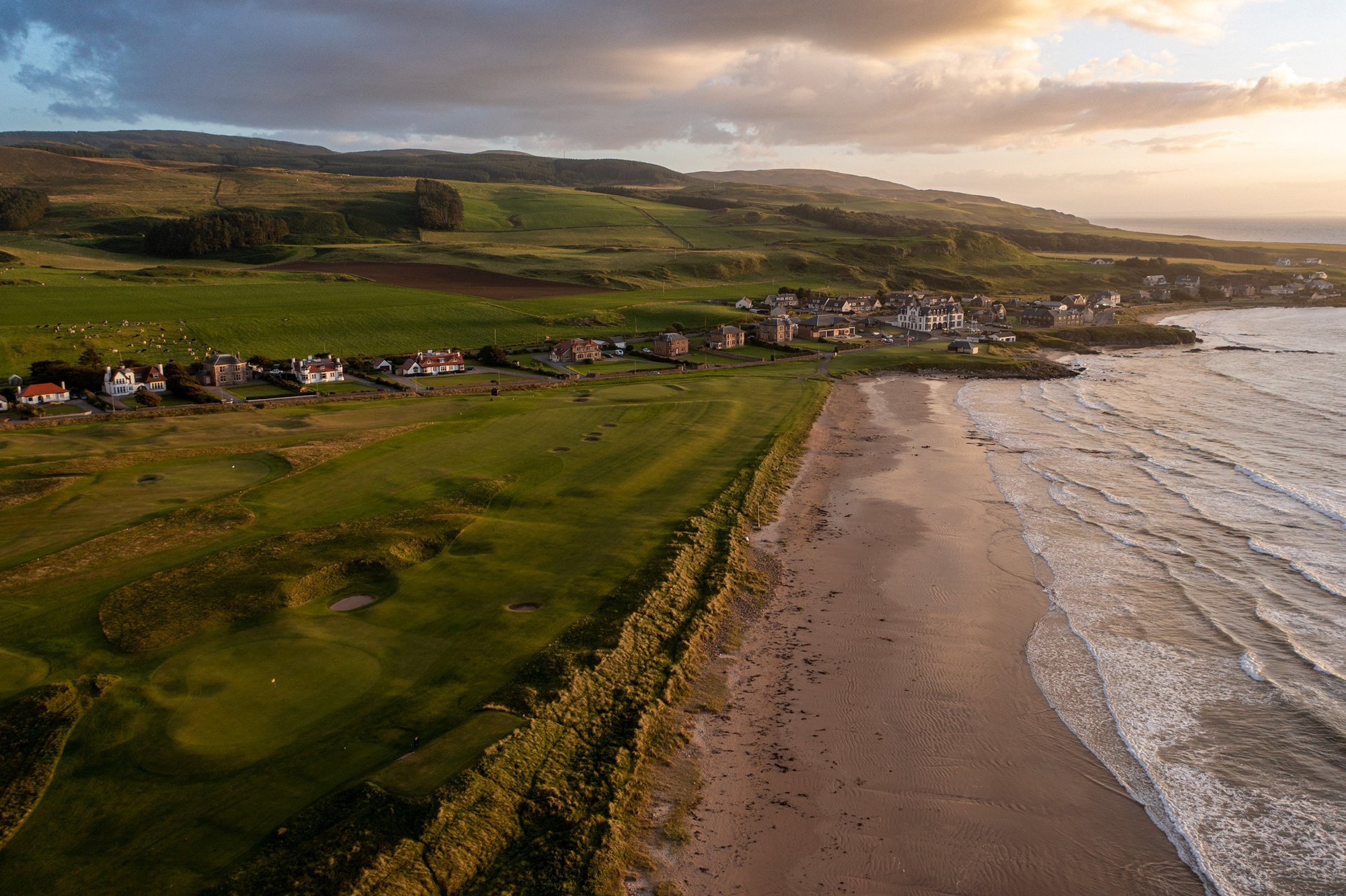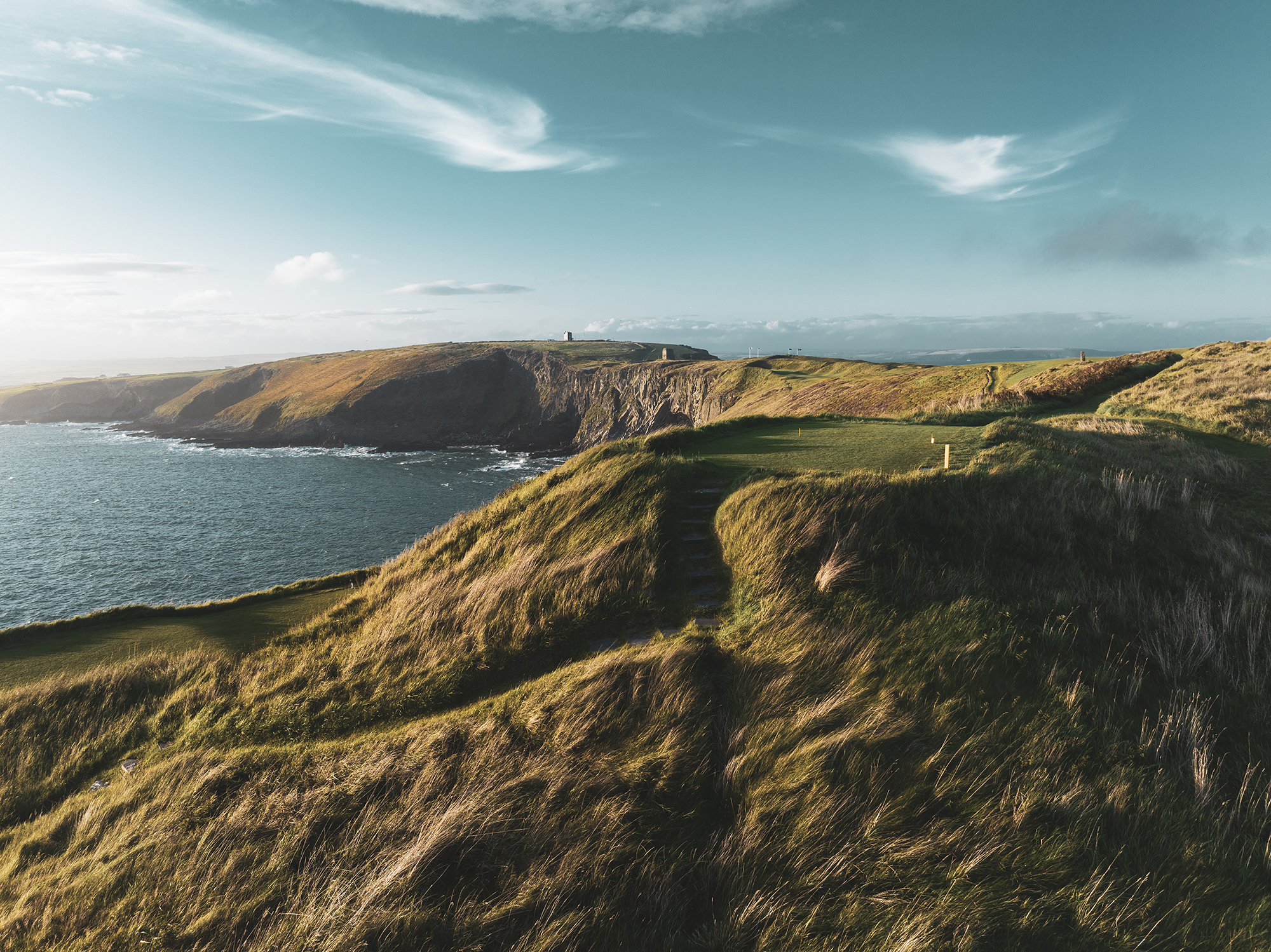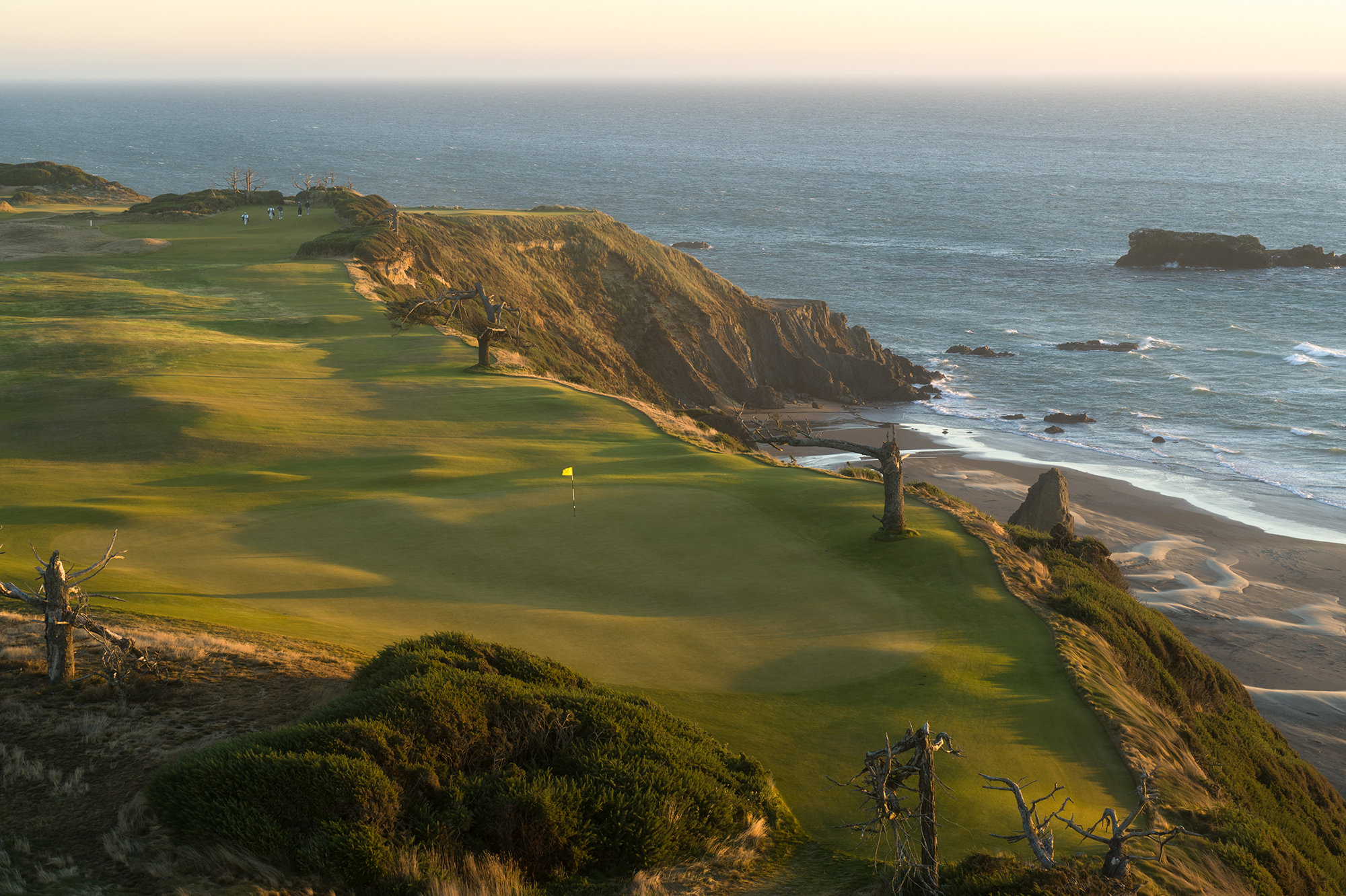Most of the time, golfers stand on a tee box with at least a modicum of optimism. It’s a vantage point that introduces a fresh start, a chance to play the forthcoming hole well—even if the holes preceding it didn’t go according to plan.
Occasionally, however, golfers will encounter a hole with a tee shot that replaces hopefulness with nervousness. On these teeing grounds, confidence may give way to trepidation. Swagger is subbed out for stress. And trust can be hard to come by.
Simply put, the following tee shots are anxiety-inducing. However, just like these nerve-wracking forced carries, the following tee shots promise moments of elation, so long as you can hit a good drive.
Machrihanish Golf Club, 1st Hole—Machrihanish, Scotland
At some point during his prolific career designing golf courses across the first half of the 20th century, Donald Ross opined that an opening hole should be a “gentle handshake.” Ironically, Ross’s mentor, Old Tom Morris, built just the opposite when he redesigned the iconic links course at Machrihanish Golf Club in 1879. There, the opening Cape hole (known as “Battery”) requires players to tee off over the beach, biting off as much of the corner (and forced carry) as they dare. Given that the club lacks a driving range—a characteristic shared by most historic links courses in the UK—players are likely stepping to the first tee cold. That only adds to the stress. For all of these reasons, Jack Nicklaus once declared Battery to be the world’s “best opening hole.” It’s a harrowing drive, for sure.

Old Head Golf Links, 12th Hole—Kinsale, Co. Cork, Ireland
Old Head’s 4th hole, named “Razor’s Edge,” can cause players’ palms to sweat, at least a little, since the subtle dogleg-left fairway is pitched toward the cliffs that drop precipitously to the Celtic Sea below. But if your pulse didn’t quicken standing on that tee box, it’s certain to once you reach the 12th, a long par five, doglegging left, with a fairway that continues to narrow as it gets closer to the green. The tee shot is anxiety-inducing, as it plays slightly up to an angled fairway, which means golfers are unlikely to see their balls land. Ironically, that’s what they’re hoping for, since it means their drives cleared the cliff face. “It’s probably the most dramatic tee shot in golf,” says Danny Brassil, the club’s director of golf and general manager. As for its name, this par five is branded “Courcean Stage,” but after first playing the course several years ago, Tiger Woods exclaimed that the club should rename it “Holy S***!”

Bay Hill Club & Lodge (Champion/Challenger), 6th Hole—Orlando, Fla.
During the Arnold Palmer Invitational in 2021, Bryson DeChambeau famously hit a drive that cleared the entire length of the water hazard on the 6th hole of the Champion/Challenger course at Bay Hill, just missing the green to the right. Obviously, a drive hit on that line is incredibly harrowing, though it’s one only DeChambeau and a stable of long-drive specialists would likely take on. Notably, the traditional line off the tee on this hole presents a shot that’s still significantly stressful. With water running down the entire left side of the fairway, conservative plays out toward the first pair of fairway bunkers leave longer shots in—and more water to carry or contend with, even if you’re laying up. Conversely, drives that are aimed just right of the water’s edge can lead to somewhat easier second shots, though they’re not without risks, too. Ultimately, the tee shot here is anxiety-inducing for several reasons, not the least of which is the knowledge that a poor one can make par a difficult score to come by.
Blackwolf Run (River), 8th Hole—Kohler, Wis.
Even before they get to the tee box of the second par five at the River course at Kohler, Wisconsin’s Blackwolf Run, golfers are likely bracing for what’s to come. A name like “Hell’s Gate” on the scorecard can do that sort of thing. Once you’re standing on those elevated teeing grounds and looking down a narrow chute carved between heavily wooded areas (with about 100 yards of dense woodland vegetation that must be cleared), that name makes even more sense. Although the landing area in the valley below is fairly wide, much of it is obscured by the trees. What’s more, the shape of the hole, doglegging to the right, can reward players who play their drives down the right side; however, that play, which can set up a reachable second shot to the green, forces players to carry more of the forest—a tactic that will have them wondering for several minutes if their ball found the short grass.

Kiawah Island Golf Resort (Ocean Course), 13th Hole—Kiawah Island, S.C.
The No. 1 handicap hole on Pete Dye’s Ocean Course is the 4th, which you might think is the routing’s most testing hole off the tee given that it plays to an island fairway. Yet, that landing area stretches almost 80 yards at its widest point. So, while it’s a tough hole, the 4th doesn’t introduce the most stressful tee shot. That honor belongs to the 13th, a par four that plays as long as 399 yards, though most resort guests will tackle it between 360 and 370 yards in length. Much like the three holes that precede it, the 13th is framed on the right by a canal running the entire length of the hole. More notably, a cluster of pot bunkers on the left come into play 220 yards from the middle tee box and can impact shots hit as far as 260 yards on that line, which means the alleyway of short grass that most amateurs have to work with is only about 24 yards wide. With prevailing winds blowing off the left, the water feels imminently in play, but so, too, are those treacherous pot bunkers if players overcompensate for the ocean breezes.

Bandon Dunes Golf Resort (Sheep Ranch), 17th Hole—Bandon, Ore.
Sheep Ranch’s location on the northernmost parcel of land at Bandon Dunes is the most exposed of any area of the resort, which means the course is constantly battered by gusty winds—a factor that led Mike Keiser, Bill Coore, and Ben Crenshaw to create a golf course completely devoid of bunkers, since the wind would make it difficult to keep traps filled with the requisite amount of sand. Moreover, those winds require golfers to hit some challenging shots from time to time, none more harrowing than the tee shot on the par-four 17th hole. Measuring only 326 yards, the course’s penultimate hole doesn’t look like much on paper, but given its orientation running north, players are most often teeing off into a wind blowing strongly off the left. The wind is so strong, in fact, that often the only chance golfers have of hitting the fairway is starting their drives left of the cliff’s edge. Depending on the tide, that means they’ll be taking aim either over the beach or the ocean hundreds of feet below them.

St. Andrews (Old), 17th Hole—St. Andrews, Scotland
If you’ve played the Road Hole before, you understand how important it is to hit your drive down the right side of the fairway. It’s the A-position for a very good reason—that vantage point offers an angle into the kidney-bean-shaped green that allows golfers to attack the middle of the putting surface without flirting too much with the infamous pot bunker guarding the back left portion of the green. Getting to the right side of the fairway, however, requires one of the most famous drives in golf—hitting over the former railway sheds, which are now a part of the Old Course Hotel. Forced carries over a beach, or water, or even fields of black volcanic rock may be nerve-wracking, but a shot that asks you to hit over a building—without drifting too far to the right, where much more of the building exists—is one that precipitates blood pressure spikes. After all, hitting a tree is cringe-worthy; but hitting someone’s hotel window is a new level of embarrassment.

What other harrowing drives should be on this list?





Played 5 out of 7 of these holes! 12 at Old Head is incredible and incredibly difficult! Played there twice, a must play bucket list experience!
Although it is technically not public, Prestwick #1 remains my worst ongoing nightmare tee shot, perhaps because it is a right-miss that is fatal, and it is the opening hole. At least at Machrihanish if your nerve fails and you bail out on the shot, a right-miss is recoverable.
https://www.youtube.com/watch?v=3jYLavNeubE
I only got to play the Eden course; my father however hit the Old Course Hotel TWICE on 17
Absolutely loved St Andrews!